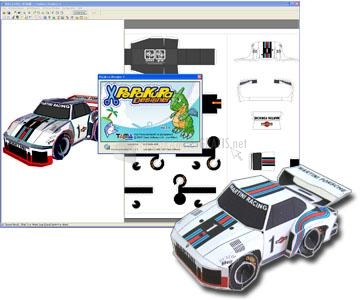

– Paper and ink in your printer (obviously…) Tips : Adding a texture – Flaps size (“2D Menu” > “Edit Mode” > “Edit Flaps”) – Page numbers (“Show page ID” checked in “2D Menu”) – Flap numbers (“Show edge ID” checked in “2D Menu”) – Object dimensions (“2D Menu” > “Change Scale”) In addition, here is a checklist before you print your Pepakura, and a few tips about the software. Your Pepakura should be ready for printing, go to “File” > “Print”, select your favorite printer, click on OK and let’s go! 🙂 BONUS : Go to “2D Menu” and click on “Show Page Number”. When opening Pepakura Designer, the screen displays:ĭo the same for the page numbers (this is useful if you want to be sure you have all the sheets printed before you start cutting them). It is a loooong learning curve but if you are motivated, you will finally be able to create nearly everything you want to.

There is a bunch of tutos on the internet if you want to try CAD design. I personally use 3Ds max, but you can find a free alternative called ‘Blender’.

Pepakura Designer, a paid software ($38), that allows to create papercrafts from 3D models.Pepakura Viewer, a free software that allows to view and print premade papercrafts,.Tama Software offers a small range of Pepakura softwares intended for papercrafts creation. The purpose of this tutorial is to teach you the basics of Pepakura Designer, a papercraft software. Tutorial: How to use Pepakura Designer software Tutorials / Materials and tools used : Matérials Tutorial: How to use Pepakura Designer software.


 0 kommentar(er)
0 kommentar(er)
